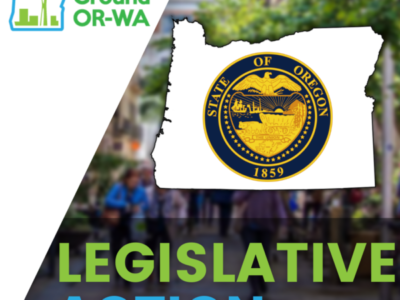CTA stations add about $4 billion in residential property value to the City of Chicago. Capturing that added land value offers a potentially viable approach for financing at least some share of transit capital needs. Read more…
Sustaining Mass Transit through Land Value Taxation? Prospects for Chicago
By Christopher Zegras, PhD, Associate Professor, Shan Jiang, MCP/MST, PhD Candidate
Department of Urban Studies and Planning, Massachusetts Institute of Technology
May 2013. (This work was undertaken with support from the Lincoln Institute for Land Policy under a David C. Lincoln Fellowship in Land Value Taxation.)
Excerpts:
In this paper, we focus specifically on the economic link between transportation and land use as exhibited in property values, with the express purpose of viewing how this link should and can be exploited as a transportation finance tool. We examine the land value created by urban rail transit access.
CTA and other transit agencies throughout the United States face a daunting funding challenge that could exacerbate in the coming years. A variety of factors make it nearly impossible for transit agencies to fund capital maintenance and rehabilitation, let alone expansion. The Federal Government and the States have been subsidizing these capital investments for years. The current economic and fiscal climate makes it unrealistic to think that these sources alone can meet funding needs. At the same time, taxpayers who do not directly benefit from transit investment are being asked to foot part of the bill, posing equity problems.
Land value capture offers a potentially viable approach for financing at least some share of transit capital needs in a fair manner, consistent with fiscal federalist principles. Our review of the empirical evidence suggests that a well-planned mass transit investment can improve accessibility and that some of these benefits are capitalized into higher land values for properties near station ingress/egress points. Since these positive externalities could be considered windfall gains for property owners, it seems reasonable to ask these beneficiaries to contribute a “fair share” of those gains to cover construction and ongoing maintenance and rehabilitation costs, which is ultimately in their financial interest.
For Chicago, justification exists to partly finance CTA capital programs from value capture techniques. Previous context-specific research provides evidence of land value appreciation due to the presence and/or construction of new CTA infrastructure. Our hedonic pricing models concur with prior evidence that CTA stations ‘bring value” to proximate properties, even after controlling for a broad range of neighborhood conditions and relative transportation levels of service to opportunities across the Chicago metropolitan area.
Our calculations suggest a land rent gradient around CTA transit stations and imply that CTA stations add about $4 billion in residential property value to the City of Chicago (roughly 3.5% of the estimated $115 billion total value). Our analysis suggests that CTA could theoretically argue for a levy (in nominal terms) of about $135 million per year under a 30-year amortization schedule.
We essentially propose land value capture strategies to fund CTA capital investments in a manner analogous to a large, long-term TIF (tax increment financing) or SAD (special assessment district) financing program.
Administratively, an Land Value Tax can take advantage of existing local government taxing capability (property assessments and taxation), though this introduces the non-trivial task of valuing land and improvements separately. Use of “pure” LVT in the U.S. is non-existent [taxing land values only], although some places such as Pittsburgh (until recently) have applied split-rate property taxes. Most instruments [including TIF and SAD] are applied to the combined contributions of land and improvement to property value as, again, pure LVT is rare in the U.S. A clear, transparent, and reasonably fair implementation strategy is critical to deriving the theoretical benefits of land value capture.
Comment:
Yes, there is plenty of evidence that rail stations ‘bring value” to nearby properties. That value is vested in land values exclusively; that is why “pure” value capture instruments should not appropriate building values as do TIF and most special assessments such as LIDs (local assessment districts) in Oregon. This is not rocket science! Land and building values are already appraised separately in standard assessment practice. The amount of given value to be captured can be determined by isolating land values attributed to the presence of rail stations from normal growth trends in land values.



